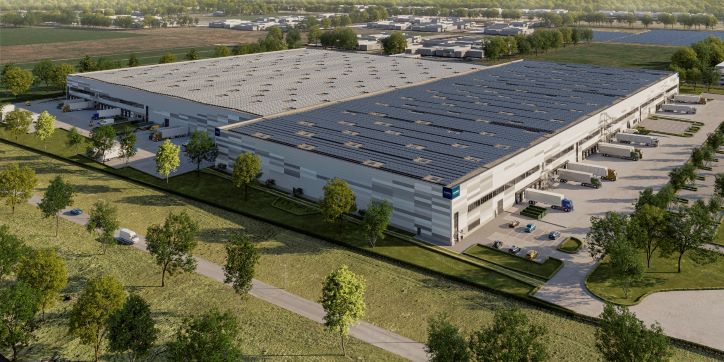Garbe Industrial Real Estate GmbH has started construction of an 82,000 sq m logistics centre in Bitterfeld-Wolfen (Saxony-Anhalt, Germany), 30km north of Leipzig. The property is being built by a joint venture comprising Garbe Industrial Real Estate, BREMER Projektentwicklung GmbH and the Quakernack Group. The building is scheduled to be completed next year. The investment volume amounts to around €72m.
The new building is being constructed on a 222,000 sq m site in the Central Germany Technology Park. The joint venture acquired the site, which is ready for development, from the city of Bitterfeld last year. The property will consist of two units. The larger one is already leased to a medium-sized German e-commerce company. The online retailer will use around 48,000 sq m for storing, picking and shipping its items. This part of the building is scheduled for completion in February 2023. As required, it can be expanded by 40,000 sq ft. A corresponding expansion option has been agreed.
Construction of the smaller unit is taking place without any fixed rental commitments. It is designed as a multi-user property, will have a total area of 34,000 sq m and is scheduled for completion in the second quarter of next year. The smaller unit will be equipped with 32 dock levellers and three ground-level gates. A total of 485 car and 49 truck parking spaces will be created on the outdoor area. Of these, 140 car and 23 truck parking spaces will be allocated to the smaller part of the building.
“The entire property will meet the highest energy requirements,” emphasises Jan Dietrich Hempel, Managing Director of Garbe Industrial Real Estate. The building will be constructed in accordance with the KfW’s (Kreditanstalt für Wiederaufbau/Credit Institute for Reconstruction) Efficiency House 40 standard. The property will therefore consume 60% less energy than that stipulated by the Building Energy Act. A photovoltaic system will be installed on the roof surface to generate renewable energy. The joint venture has commissioned BREMER Leipzig GmbH as general contractor to build the property.
Garbe develops
Hempel expects the building section, which is being constructed on a speculative basis, to be fully leased during the construction phase: “Bitterfeld-Wolfen is an up-and-coming location in the Leipzig-Halle logistics region that offers excellent growth prospects. The excellent cooperation with the city administration undoubtedly also contributes to this.”
In addition, the Garbe managing director underlines the transport connections. The technology park is located only a few hundred metres from the junction to the A9 motorway. It is one of the most important north-south axes connecting Bitterfeld-Wolfen with Leipzig, Nuremberg and Munich to the south and the greater Berlin area to the north. Leipzig-Halle Airport is about 30km away. So far, the technology park has mainly been home to companies from the materials development, automotive and solar cell industries.
read more











